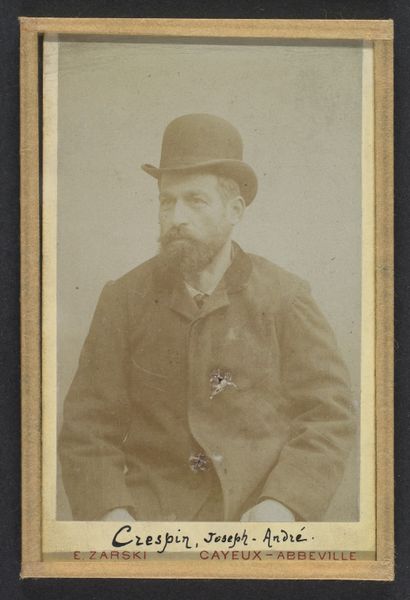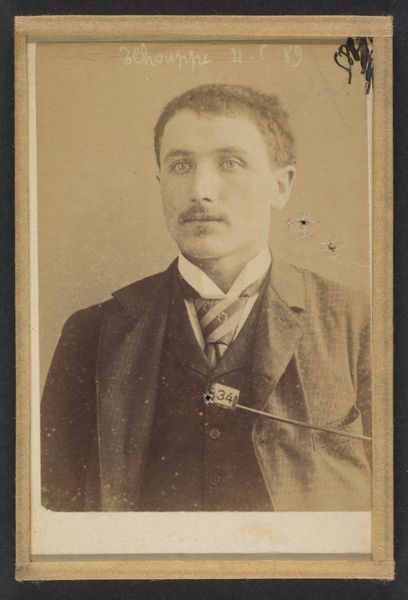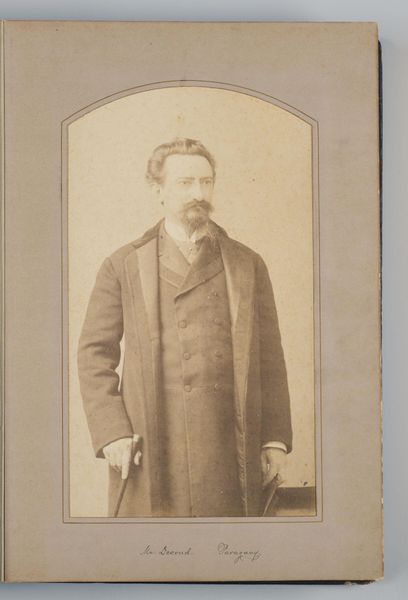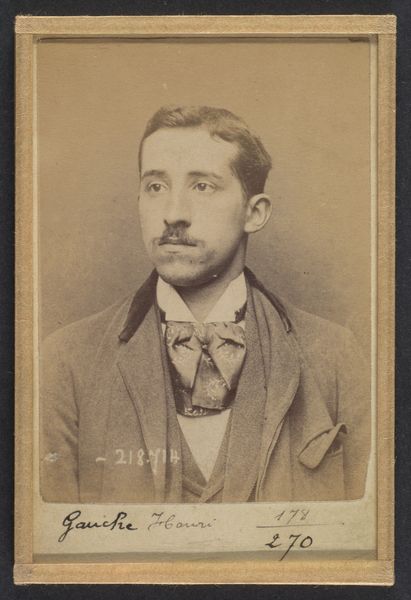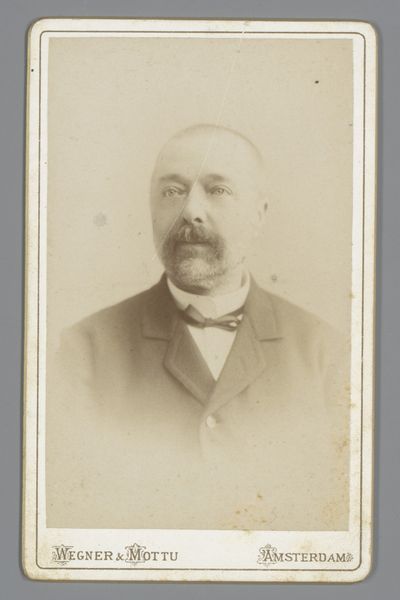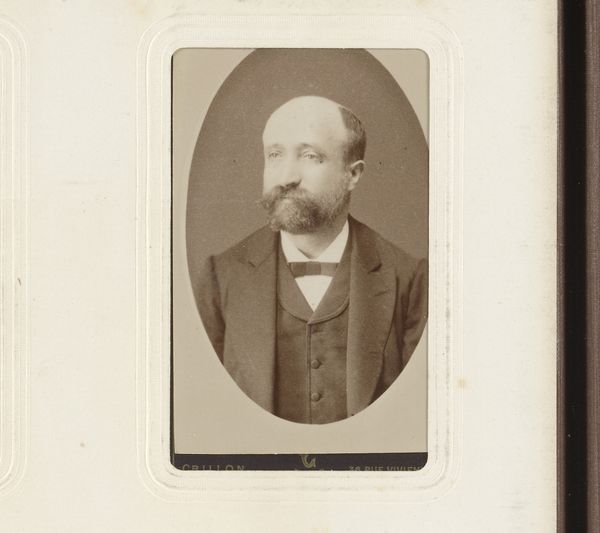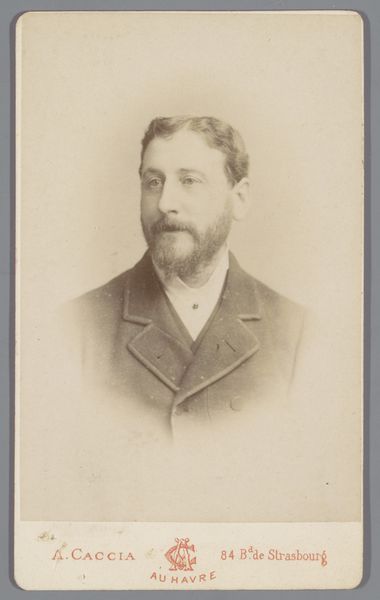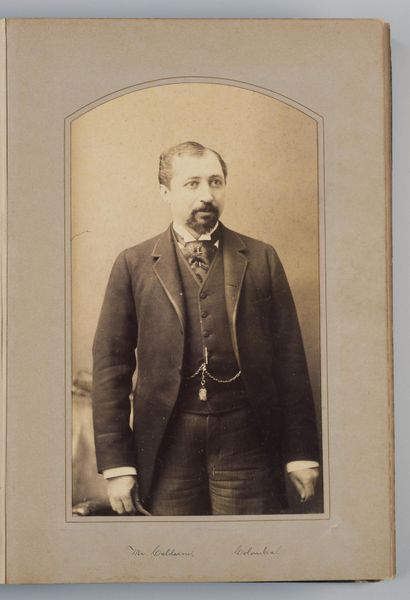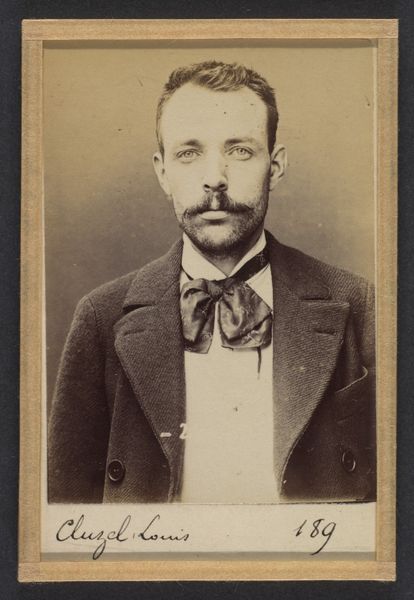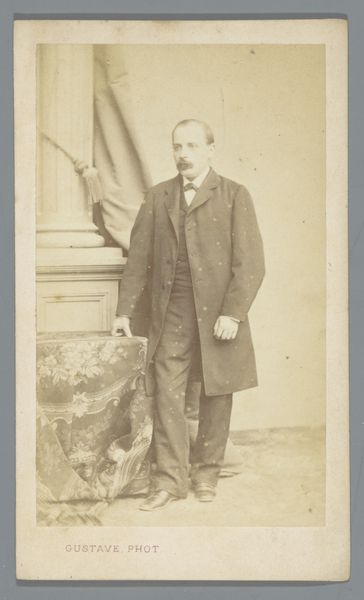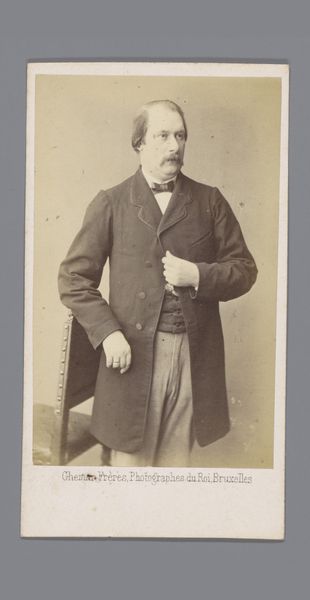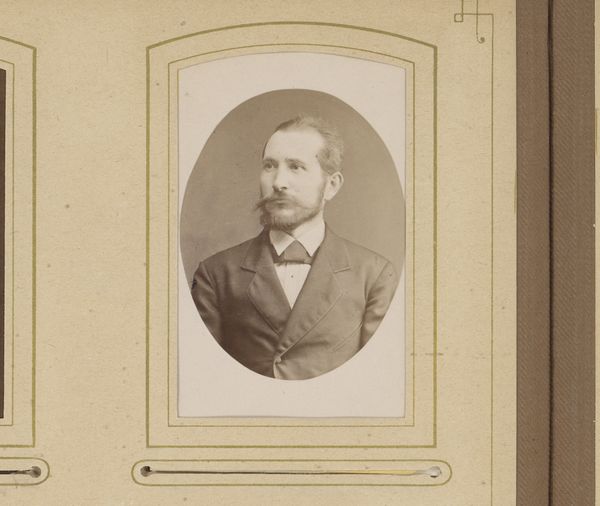
photography
#
portrait
#
toned paper
#
photography
Dimensions: 10.5 x 7 x 0.5 cm (4 1/8 x 2 3/4 x 3/16 in.) each
Copyright: Public Domain
Curator: Looking at this tinted photograph by E. Zarski, dating from the 1880s or 1890s, I'm immediately struck by its sepia tones and the gentleman’s serious expression. The portrait is titled "Manem, dit Monem de Bretauville.” Editor: The color palette certainly contributes to an overall somber feel. What story can be gleaned from this man, framed within the cultural currents of his time? The lack of vivid colors lends itself to a reflection of history and its impact. Curator: There's an understated dignity about him, don't you think? The bowler hat, the cravat... It speaks to the conventions of masculine portraiture in the late 19th century, hinting at social standing and perhaps a particular set of values that he wanted to project. The placement of his hands could signal contemplation, although there are multiple other readings as well. Editor: Agreed, but I’m drawn to the implied politics. How might Manem, styled with evident bourgeois aspirations, position himself amidst France’s socio-political changes following the Paris Commune? This image almost begs us to explore class identity, gender presentation, and power in the late 19th century, right? Curator: Indeed. And note the careful use of light. It models the face subtly, emphasizing structure, and capturing texture—while much of his clothing disappears into shadow. To me, it signifies the eternal—a way of fixing a likeness and, by extension, memory itself. In a symbolic way, light emphasizes knowledge. Editor: Absolutely. Yet that deliberate manipulation of light and shadow may also obscure as much as it reveals. What are we *not* seeing about Manem, and how does Zarski, the photographer, either complicitly or unknowingly, participate in crafting a persona shaped by dominant cultural narratives? Perhaps a kind of myth-making, that is, about to be passed to future generations. Curator: That’s an interesting perspective to consider! What began as a seemingly straightforward portrait reveals itself to be quite a rich exploration of visual language, isn't it? Editor: Definitely. It is an image brimming with potential to provoke dialogue about history, representation, and memory.
Comments
No comments
Be the first to comment and join the conversation on the ultimate creative platform.
